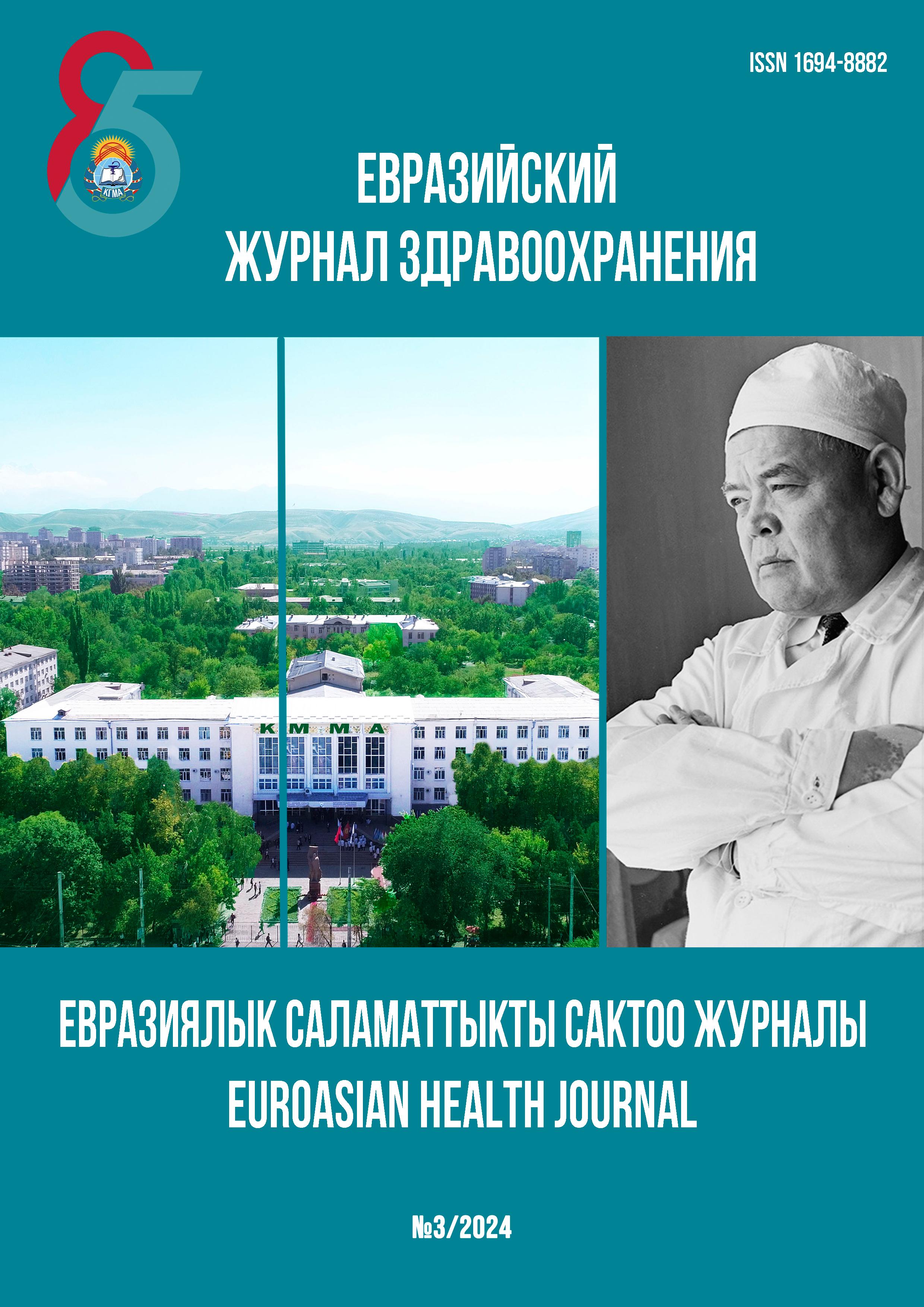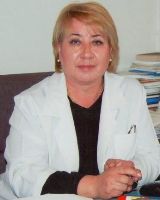THE USE AND APROBATION OF FIRST UZBEK NEUROLINGUISTIC PROTOCOL FOR ASSESSMENT OF LANGUAGE FUNCTIONS
DOI:
https://doi.org/10.54890/1694-8882-2024-3-88Abstract
Purpose: to enlighten about first Uzbek aphasia testing system that helps to assess the speech disorders in patients who had surgical resection of the tumors of eloquent brain areas of the brain, furthermore in patients with various pathological conditions, including ischemic stroke of eloquent areas.
Materials and methods. The linguistic protocol was tested on 25 healthy individuals, and on patients of the institution's skull base surgery department.
Results. Uzbek Aphasia Test has been validated by testing on 25 healthy individuals and recommended to use in neurological clinical examinations on patients in republican scientific center of neurosurgery.
Conclusion. The Uzbek Aphasia Test System serves as a convenient speech assessment protocol not only for intraoperative settings but also postoperatively, helping to functionally evaluate the degree of damage on language cortex and subcortical language networks. Utilizing this protocol, it is possible to monitor the neurological status of patients also in the postoperative period, this, in turn, reduces chances of disabilities caused by intraoperative damage to eloquent language areas.
Keywords:
neurolinguistic protocol, aphasia, intraoperative mapping.References
1. De Witt Hamer PC, Robles SG, Zwinderman AH, Duffau H, Berger MS. Impact of intraoperative stimulation brain mapping on glioma surgery outcome: A meta-analysis. Journal of Clinical Oncology: Official Journal of the American Society of Clinical Oncology. 2012;30(20):2559–2565. https://doi.org/10.1200/JCO.2011.38.4818
2. Marshall RC, Wright HH. Developing a clinician-friendly aphasia test. Am J Speech Lang Pathol. 2007;16(4):295-315. https://doi.org/10.1044/1058-0360(2007/035)
3. Duffau H. Surgery of low-grade gliomas: towards a 'functional neurooncology'. Curr Opin Oncol. 2009;21(6):543-549. https://doi.org/10.1097/CCO.0b013 e3283305996
4. Bello L, Gallucci M, Fava M, Carrabba G, Giussani C, Acerbi F, et al. Intraoperative subcortical language tract mapping guides surgical removal of gliomas involving speech areas. Neurosurgery. 2007;60(1):67-82.https://doi.org/10.1227/01.NEU. 0000249206.58601.DE
5. Fernández Coello A, Moritz-Gasser S, Martino J, Martinoni M, Matsuda R, Duffau H. Selection of intraoperative tasks for awake mapping based on relationships between tumor location and functional networks. J Neurosurg. 2013;119(6):1380-1394. https://doi.org/10.3171/2013.6.JNS122470
6. Bertani G, Fava E, Casaceli G, Carrabba G, Casarotti A, Papagno C, et al. Intraoperative mapping and monitoring of brain functions for the resection of low-grade gliomas: Technical considerations. Neurosurgical Focus. 2009;27(4):E4. https://doi.org/10.3171/2009.8.FOCUS09137
7. Enderby PM, Wood VA, Wade DT, Hewer RL. The Frenchay Aphasia Screening Test: a short, simple test for aphasia appropriate for non-specialists. Int Rehabil Med. 1987;8:166–70.
8. Brott T, Adams HP, Olinger CP, Marler JR, Barsan WG, Biller J, et al. Measurements of acute cerebral infarction: a clinical examination scale. Stroke. 1989;20:864–70.
9. Flamand-Roze C, Falissard B, Roze E, Maintigneux L, Beziz J, Chacon A, et al. Validation of a new language screening tool for patients with acute stroke: The Language Screening Test (LAST). Stroke. 2011;42:1224–1229. https://doi.org/10.1161/STROKEAHA.110.609503
10. Fitch-West J, Ross-Swain D, Sands ES. BEST-2: Bedside evaluation screening test. Austin: TX Pro- Ed; 1998.
11. Martin N, Minkina I, Kohen FP, Kalinyak-Fliszar M. Assessment of linguistic and verbal short-term memory components of language abilities in aphasia. J Neurolinguistics. 2018;48:199-225. https://doi.org/10.1016/j. jneuroling.2018.02.006
12. Wilson SM, Eriksson DK, Schneck SM, Lucanie JM. A quick aphasia battery for efficient, reliable, and multidimensional assessment of language function [published correction appears in PLoS One. 2018 Jun 15;13(6):e0199469. https://doi.org/10.1371/journal.pone.0199469]. PLoS One. 2018;13(2):e0192773. Published 2018 Feb 9. https://doi.org/10.1371/journal.pone.0192773
13. Oldfield RC. The assessment and analysis of handedness: the Edinburgh inventory. Neuropsychologia. 1971;9(1):97-113. https://doi.org/10.1016/0028-3932(71)90067-4
14. Wilson SM, Henry ML, Besbris M, Ogar JM, Dronkers NF, Jarrold W, et al. Connected speech production in three variants of primary progressive aphasia. Brain. 2010;133:2069–88. https://doi.org/10.1093/brain/awq129
15. MacWhinney B, Fromm D, Forbes M, Holland A. AphasiaBank: methods for studying discourse. Aphasiology. 2011;25:1286–307. https://doi.org/10.1080/ 02687038.2011.589893
16. Strand EA, Duffy JR, Clark HM, Josephs K. The Apraxia of Speech Rating Scale: a tool for diagnosis and description of apraxia of speech. J Commun Disord. 2014;51:43-50. https://doi.org/10.1016/j.jcomdis.2014.06.008
17. Duffau H, Gatignol P, Mandonnet E, Peruzzi P, Tzourio-Mazoyer N, Capelle L. New insights into the anatomo-functional connectivity of the semantic system: a study using cortico-subcortical electrostimulations. Brain. 2005;128(Pt 4):797-810. https://doi.org/10.1093/brain/awh423
18. Nespoulous J-L, Moureau N. ‘‘Repair strategies’’ and the production of segmental errors in aphasia: Epentheses vs. syncopes in consonantal clusters. In: Visch-Brink E, Bastiaanse R, eds. Linguistic levels in aphasiology. San Diego-London: Singular Publishing Group. 1998:133–145.
19. Duffau H. The huge plastic potential of adult brain and the role of connectomics: new insights provided by serial mappings in glioma surgery. Cortex. 2014;58:325-337. https://doi.org/10.1016/j.cortex.2013.08.005
20. Maldonado IL, Moritz-Gasser S, Duffau H. Does the left superior longitudinal fascicle subserve language semantics? A brain electrostimulation study. Brain Struct Funct. 2011;216(3):263-274. https://doi.org/10.1007/s00429-011-0309-x
21. De Witte E, Satoer D, Robert E, Colle H, Verheyen S, Visch-Brink E, et al. The Dutch Linguistic Intraoperative Protocol: A valid linguistic approach to awake brain surgery. Brain and Language. 2015;140:35-48. https://doi.org/10.1016/j.bandl.2014.10.011
22. Moritz-Gasser S, Herbet G, Duffau H. Mapping the connectivity underlying multimodal (verbal and non-verbal) semantic processing: a brain electrostimulation study. Neuropsychologia. 2013;51(10):1814-1822. https://doi.org/10.1016/j.neuropsychologia.2013.06.007
23. Trinh VT, Fahim DK, Shah K, Tummala S, McCutcheon IE, Sawaya R, et al. Subcortical injury is an independent predictor of worsening neurological deficits following awake craniotomy procedures. Neurosurgery. 2013;72(2):160-169. https://doi.org/10.1227/NEU.0b013e31827b9a11
24. Mamadaliev DM, Kariev GM, Asadullaev UM, Yakubov JB, Zokirov KS, Khasanov KA, et al. Simplifying the Technique of Awake Brain Surgery in a Condition of Less Equipped Neurosurgical Institution in Uzbekistan. Asian J Neurosurg. 2023;18(3):636-645. Published 2023 Sep 22. https://doi.org/10.1055/s-0043-1771326
25. Mamadaliev DM, Saito R, Motomura K, Ohka F, Scalia G, Umana GE, Conti A, Chaurasia B. Awake Craniotomy for Gliomas in the Non-Dominant Right Hemisphere: A Comprehensive Review. Cancers. 2024;16(6):1161. https://doi.org/10.3390/cancers16061161







